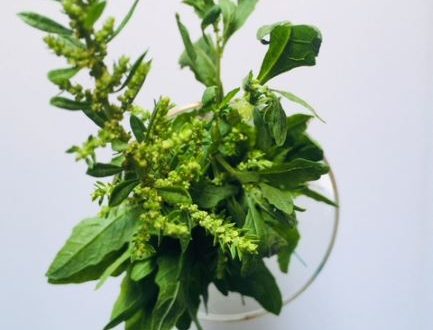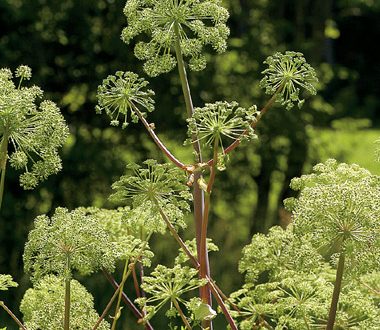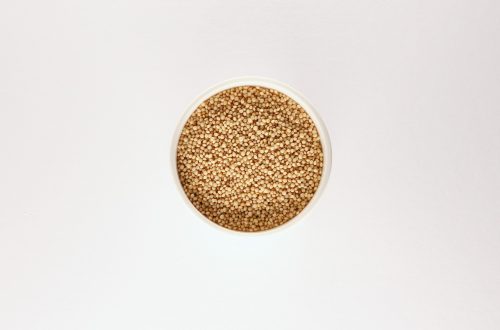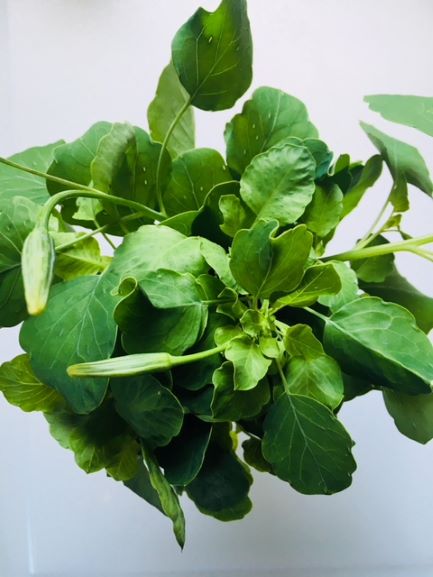
What is Papalo?
It’s always exciting for me to come across something I’ve never seen before, especially in the herb and plant family. A week ago I was at the farmers market. I came upon a gentleman discussing herbs, in particular herbs indigenous to Mexico and South American countries. One of the plants he was explaining about was Papalo. When he gave me a leaf to try, I was immediately blown away by the flavor. The flavor was intense. It tasted like cilantro but sharper with a little bitterness similar to arugula. There were also notes of mint. I quickly bought some along with another bunch of herbs (which I’ll talk about at a later date) to take home with me. I needed to find out more about this herb, its origination and the benefits.
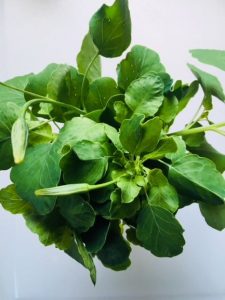
Papalo
Papalo is an ancient herb and its origins are Mexico, Central and South America. The leaves are shaped like butterflies which is how the herb got it’s name, Papalo meaning a derivative of butterfly in the Nahuatl language. The Nahuatl language is a language spoken by the Nahuas an indigenous group of people from Mexico and El Salvador. (1)
The leaves and stems of Papalo are normally used as a condiment. Papalo is best when used raw. When dried the herb looses a lot of its pungent flavor. Not only does the herb provide flavor to dishes, but it’s reported that it assists in lowering high blood pressure and helping stomach disorders. For example there are popular sandwiches in Mexico called cemitas where Papalo is used as the finishing touch. The herb adds a sharp pungent flavor which compliments and balances out the fattiness of the sandwich at the same time aides in digestion.

The Benefits of Papalo
As discussed above Papalo has been reported to help in lowering high blood pressure and assist with stomach disorders. And in Bolivia indigenous people use the herb for inflammation stemmed from infections because the herb is believed to lower inflammation. Papalo has also been used for liver issues.
How I used Papalo
When I brought the Papalo herb in my home and placed it in my kitchen, the whole kitchen immediately became fragrant with the smell. Because of the highly fragrant oils in the Papalo leaves it’s a plant known for deterring insects.
Even though Papalo is similar to cilantro it is not the same (my cilantro post right here). Papalo is much stronger in taste. I would highly suggest to not to do a 1:1 substitution. Because there’s a more intense flavor of the herb if your recipe calls for 2 tablespoons of cilantro, I would only replace with 1 tablespoon of Papalo. Which is what I did when making a guacamole type dip for my plantain chips. I basically used half the Papalo of what I would use of cilantro.
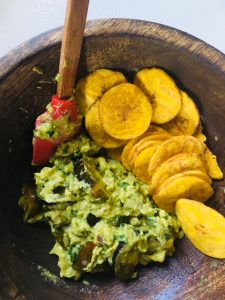
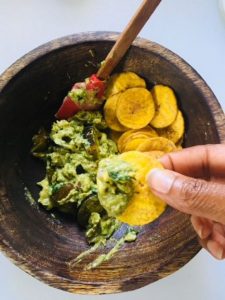
If you should come across this herb at a farmers market, I would try it. The taste is bold, unique and brings tons of flavor to dips, sandwiches, salads, just about anything! And if you don’t find it anywhere near you. Don’t worry. You might want to add Papalo to your herbal garden so you can try it. Papalo is an annual plant that is easy to grow, especially in the summer because it loves the sun. And if you don’t like the flavor you can always keep it around to deter insects.
During my research I came upon a site right here where you can purchase Papalo seeds.
References
https://en.wikipedia.org/wiki/Nahuas
http://www.banderasnews.com/1310/hb-papalosmellslikeaskunk.htm



